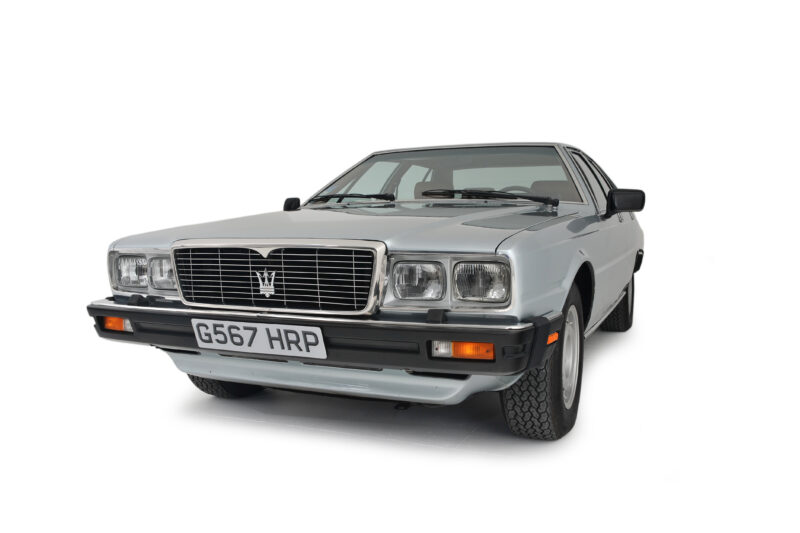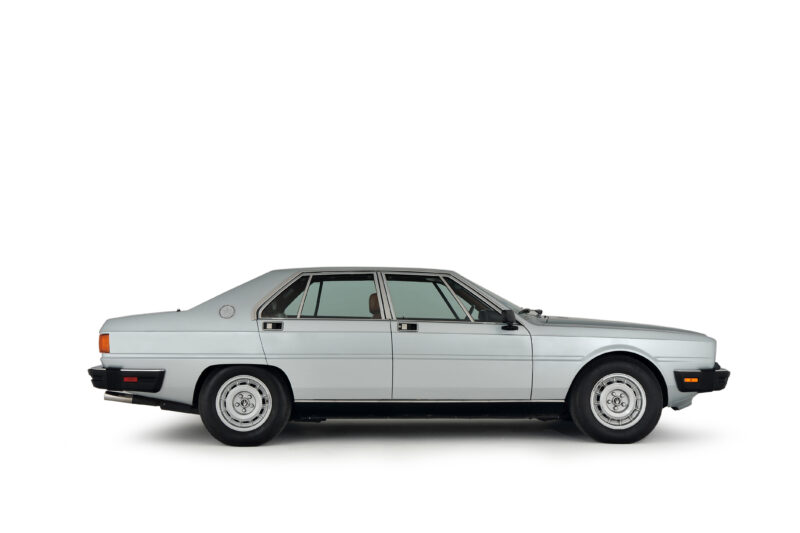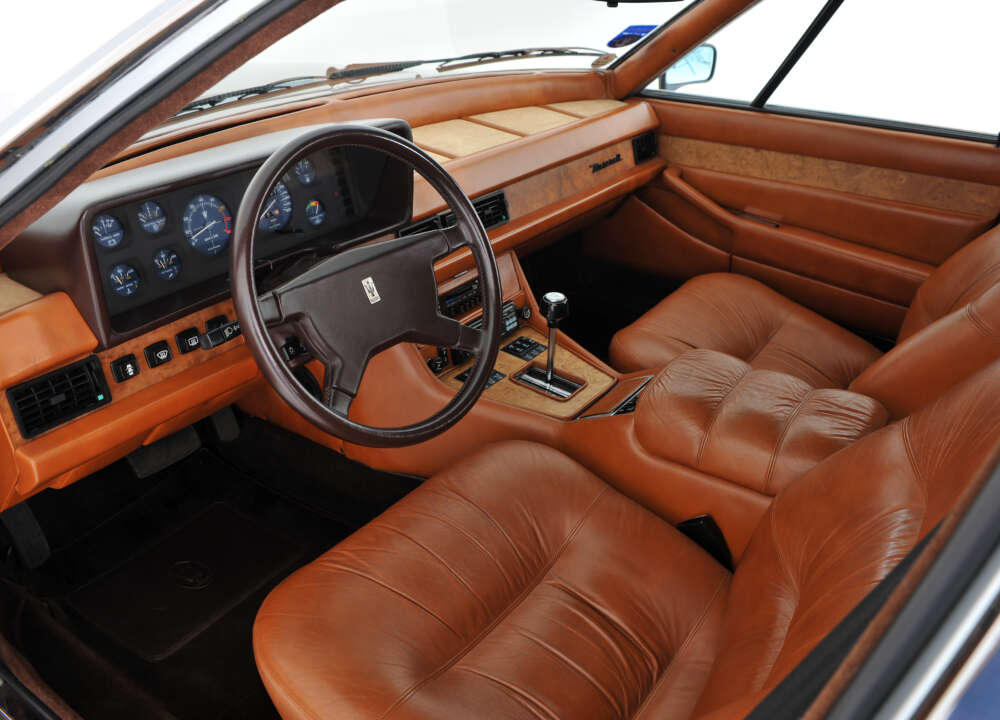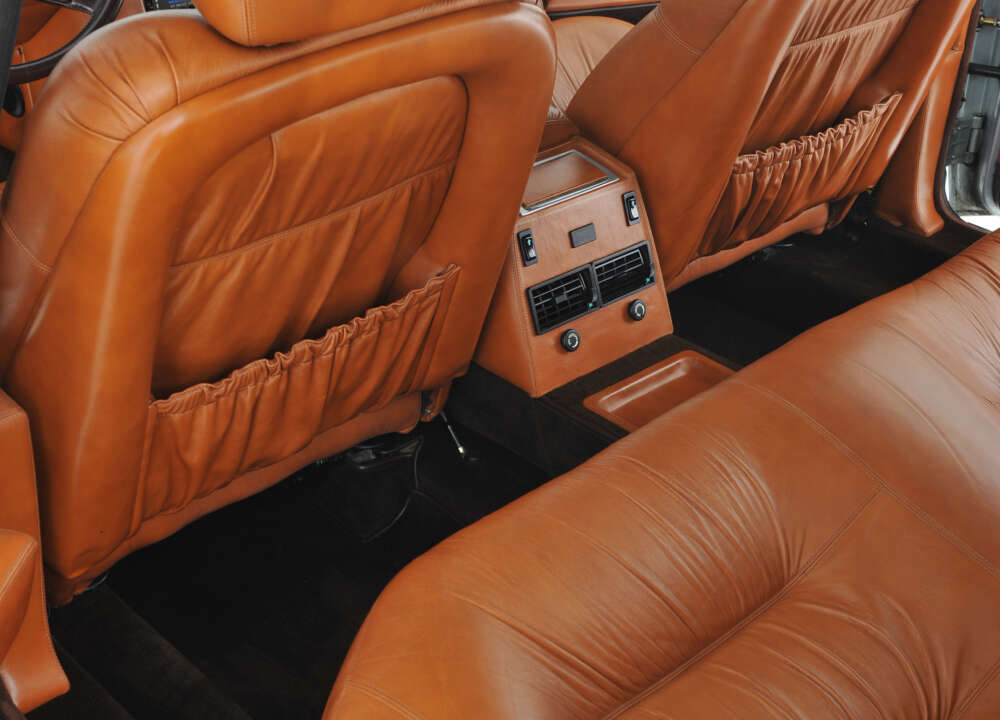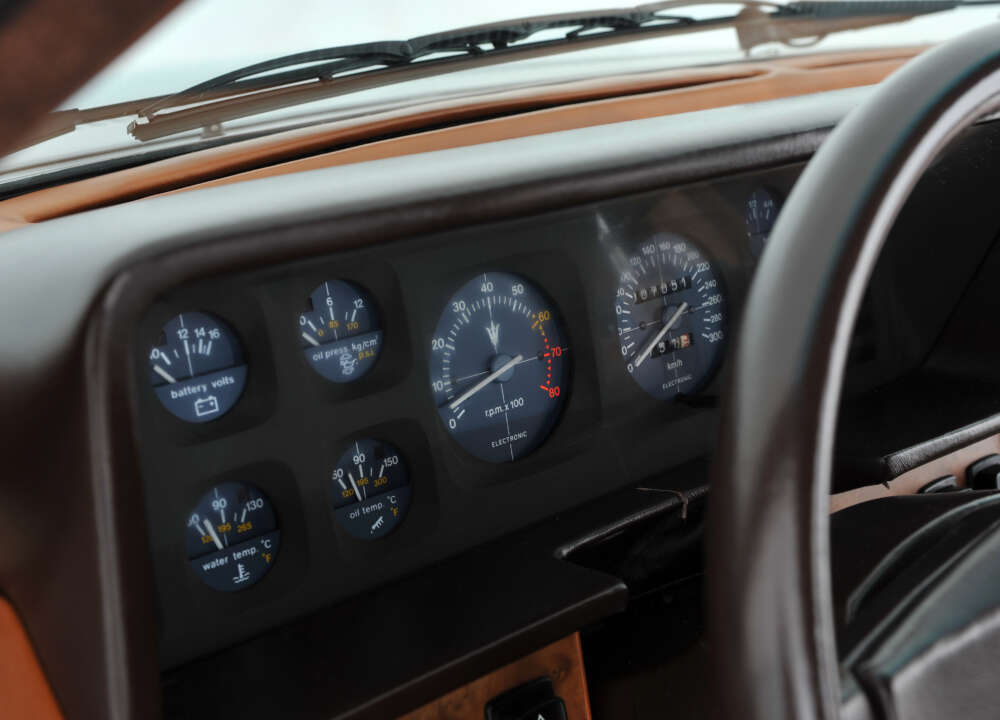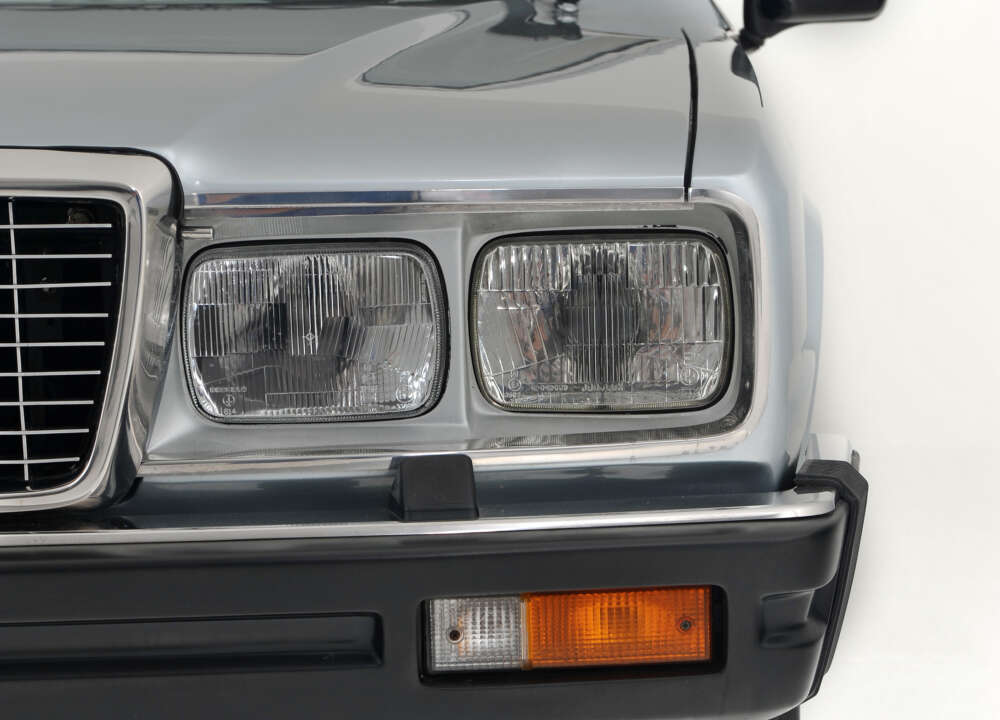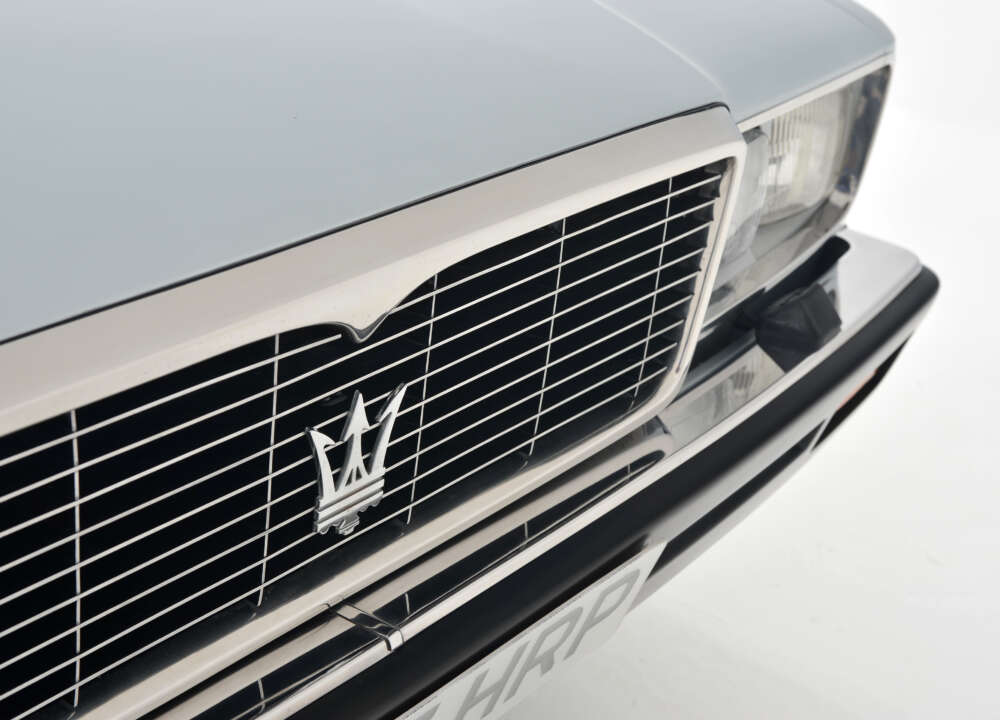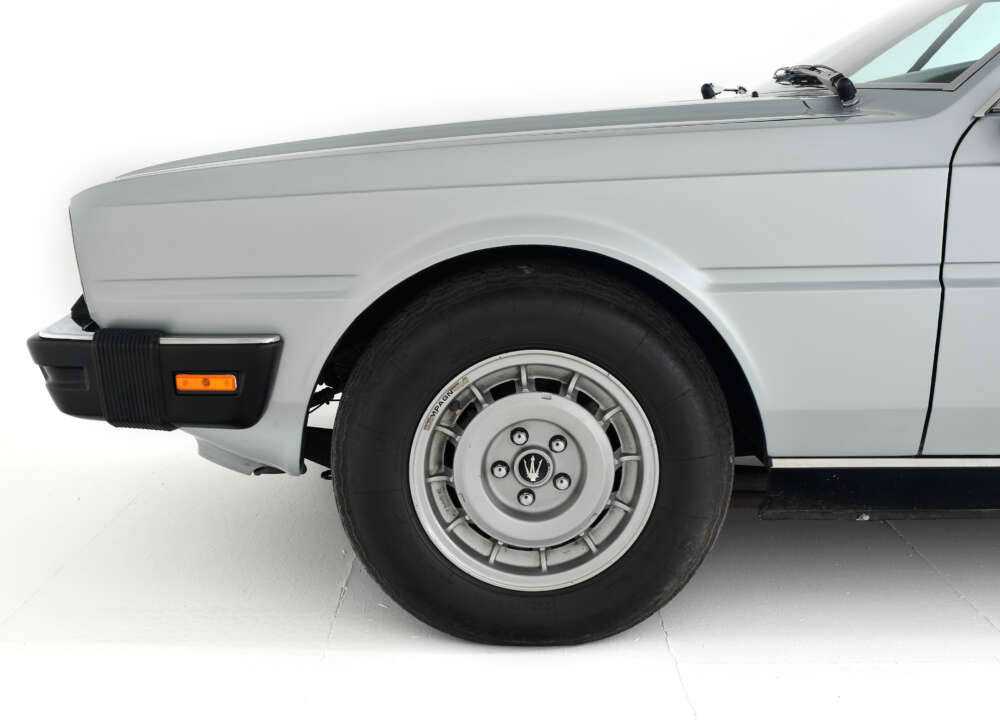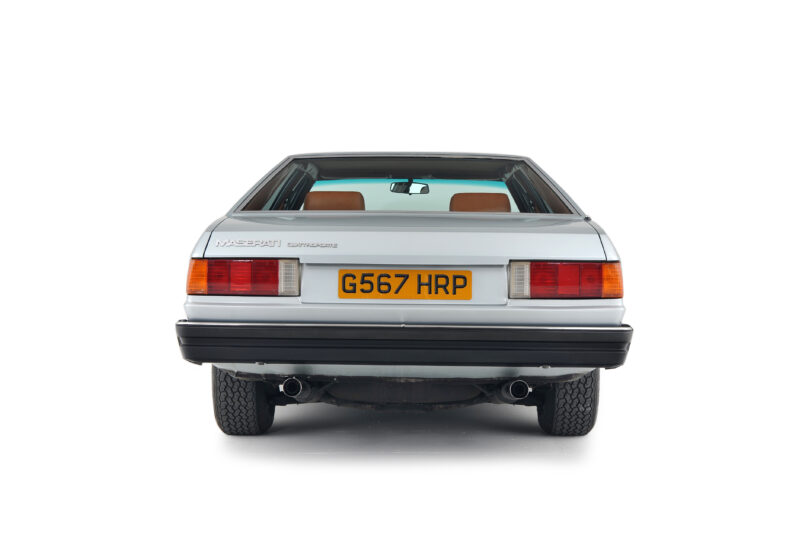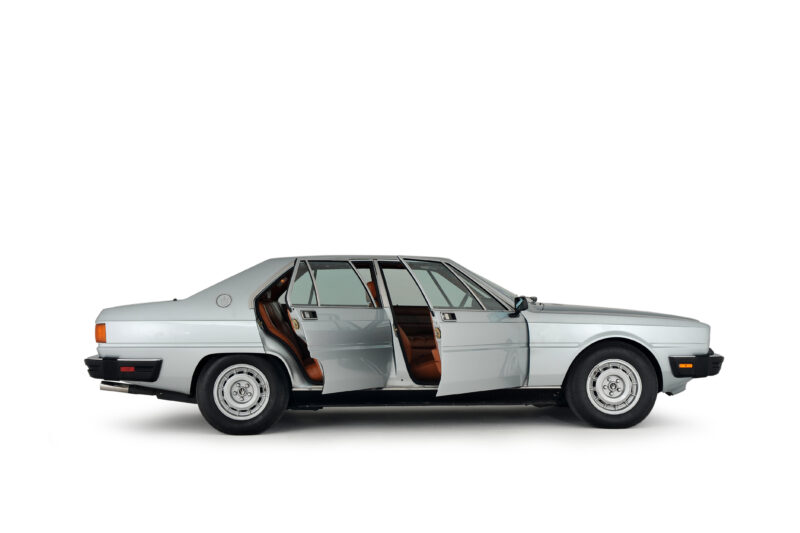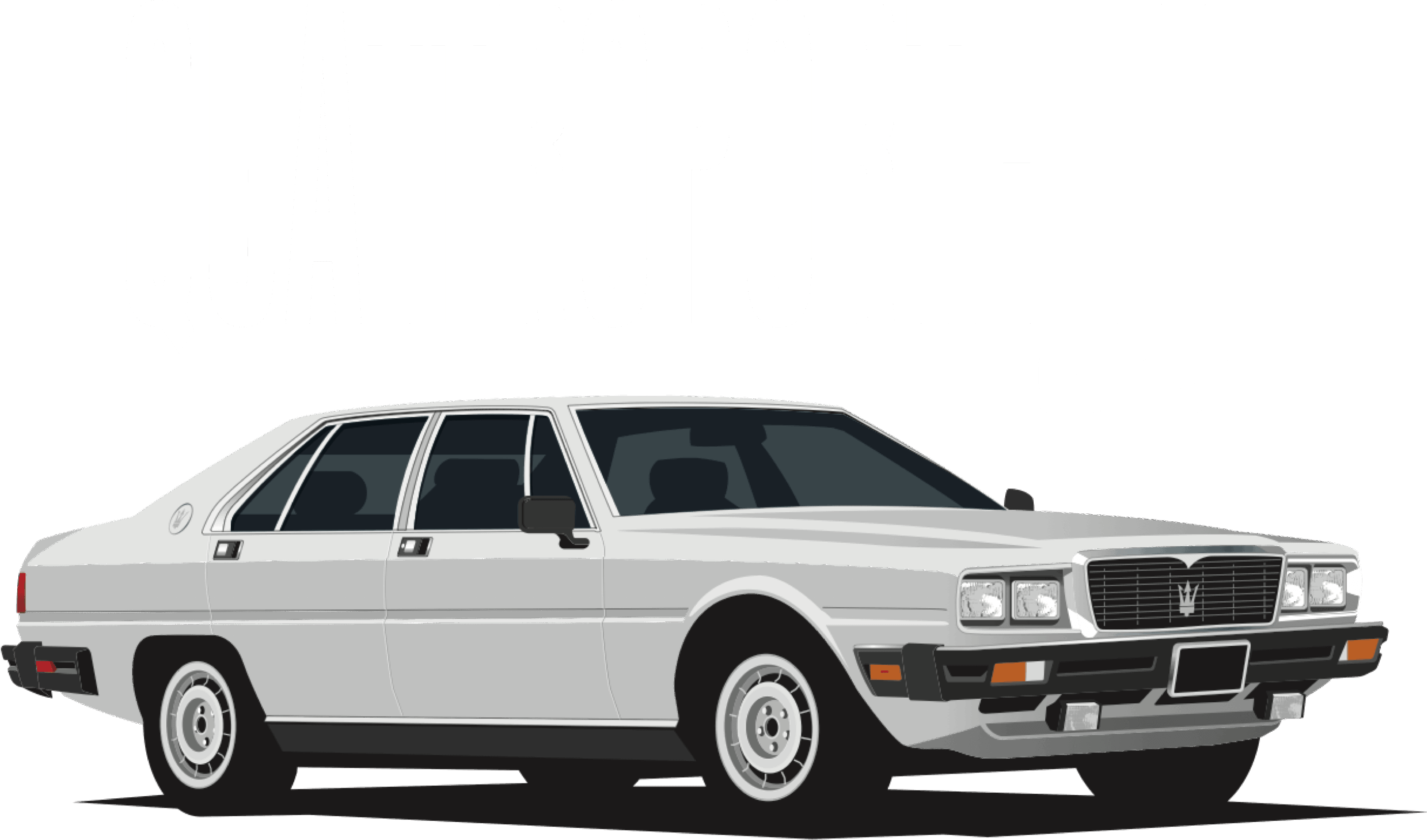
The largest and most imposing is also the most comfortable and affordable classic Maserati GT.
After cancelling the Quattroporte II, since its components would have become unavailable with the demise of the Citroën SM, de Tomaso launched the development of the Quattroporte III. He went back to the traditional rear-wheel-drive configuration with the tried and tested V8. Giorgetto Giugiaro of Ital Design gave shape to its carrozzeria.
The sheer size and even more so the mass of the car was somewhat of a surprise. The factory presented a design study to some journalists in 1976, but it took more than two years for the introduction of the final product at the 1978 Turin show. The result retained some elements of the two rather clumsy-looking Ital Design Medici design studies (1974, 1976), mainly the very luxurious interior.
Always a man with a clear idea of potential markets, de Tomaso conceived the Quattroporte III (never an official appellation by the way) with the USA market in mind. While it was slightly shorter than both the Quattroporte I and the stillborn QPII, the new car was almost overwhelming with its sheer gravitas and very imposing yet rakish straight lines. If it had been designed to impress, it certainly got ten out of ten. Its heft reflected that with 1938kg, close to two tons. The chassis like the Kyalami was based on that of the de Tomaso Deauville and shorter wheelbase Longchamp. It used the same Jaguar like wishbone suspension with coil springs and tower shocks as well as a rear anti-roll bar.
The most prominent part of the QPIII's persona was its interior which defined new standards of luxury with sumptuous acres of leather. The hides were not sewn tight into the seats but laid out in a puffy manner, reminiscent of the armchairs in an exclusive London club's cigar room. The fact is that the interior remains unmatched to this day in tasteful opulence. Most cars had a natural brown tobacco leather shade. Other colours became available later on. The last cars, the Royale, had white interiors.
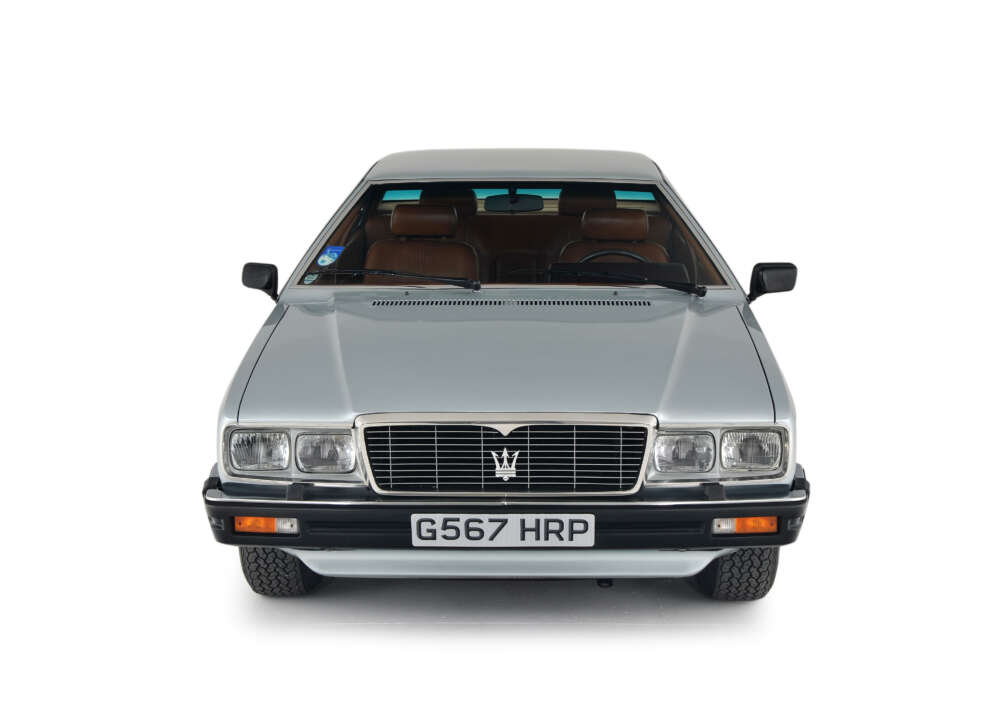
It did indeed sell very well in the USA where all were automatic, with only a couple sold with manual gearboxes. It was also a sales success in the Middle East.
QPIII's were often in movies such as Rocky, The fly, Miami Vice, Scarface. Probably welcome publicity for the brand, even though typically the characters using them were not exactly angels.
At the wheel, it is most comfortable, and the interior is truly a sight to behold. When trying to drive it spiritedly through a series of S curves, it will tell you that it does not like to be hurried beyond what its mass would tolerate: stately progress is best.
Specifications
The chrome script on the rear trunk lid was spelt 4porte before the word Quattroporte replaced it. It was a significant success for Viale Ciro Menotti with 2155 units built. Most cars were delivered with Chrysler Torqueflite automatic. First cars, mostly for the Italian market, were made with the 4,2-litre spec engine before the use of the 4,9 was favoured. According to the factory, only 69 cars were built with the 4,2 engine. There was also a bulletproof version which was chosen by Italian President Sandro Pertini.
In 1986 the Royale version was introduced. The badging was different, but the nose was the same as the QPIII. Compared with previous QP III's the leather used was of much higher quality and with no cost-saving PVC *. The fake wood was upgraded with proper Briarwood inserts. The cooling box in the rear was optional, and the matching pewter glasses were located in very tight binnacles built into the B pillar trim – so tight that they were awkward to remove. There were also writing tablets in lacquered wood that pulled out of the doors to sign those big contracts. According to the brochure, the power was up to 300hp. This version was initially announced for 100 cars, and the factory only produced 51. The single biggest market for the Royale was Japan.
Celebrity owners included a veritable who's who list of aristocrats, film stars, and big-time business people. Paris based Arab tycoon Akram Ojjeh had several and almost bought the Maserati factory in 1975 when encouraged to do so by Giulio Alfieri. Haiti's presidential palace ordered one as did many other diplomats such as the ambassador of Gabon in France.
Given its allure and simple straight-line design, the QPIII was an obvious candidate for the limousine market, and some were made by the Diomante firm in Italy complete with television, minibar and phone. One of these stretched cars was used in the movie "The running man".
2145 cars built between 1979 - 1990 **.
between 1979 – 1983 69 cars were built with 4.2 engine, between 1978 – 1988 2025 cars were built with 4.9 engine, between 1987 – 1990 51 cars named Royale were built with 4.9 engine.
Engine
V8, light-alloy block
4136 cc; 4930 cc for Quattroporte 4900 & Royale
Power output: 255 hp; 280 hp for Quattroporte 4900; 300 hp for Royale
Body
Four-door saloon, five-seater; monocoque body shell
Designed by Italdesign
Performance
220 kph; 230 kph for Quattroporte 4900 and Royale
* As for the interior of Royale, there was a good mix of interior colours, although Panna and Avorio were the most common:
30 units with Panna interior
14 units with Avorio interior
3 units with Black interior
1 unit with Naturale (as Quattroporte) interior. Sold new in Italy
1 unit with beige interior
Also, late Quattroportes could be had with Royale interior colours but without the Royale options. These cars were sold mostly in Japan.
** Total production is 2145 cars according to Ermanno Cozza
They are split as follows:
69 units of 4.2 manual
262 units of 4.9 manual
1763 units of 4.9 automatic
10 units of Royale manual
41 units of Royale automatics
Competitors
Apart from the Aston Martin Lagonda, the BMW 7 series 1st version (E23) was the apparent competitor built in vastly higher numbers. While it did everything well, it still lacks the rarity and Latin charisma of our Modenese four-door. The BMW was the first to offer driver's side airbag and ABS brakes. Still, the key is these were not collectable but considered disposable, and extremely few are in good condition.
In contrast, the Maserati was a car to preserve. Everyone knew from the beginning that they were born collectable. What applies to the BMW 7 series also applies to the similar Mercedes 500 and 560SEL, only the 6.9-litres made from 1975 to 1981 being collectable, 7380 were built. Jaguar XJ6's version then current is more collectable and more popular as such than their German equivalent, but its conception dates back to 1968 spanning to 1992: you might as well buy a Quattroporte I!
Valuation
By far the most affordable classic Maserati GT car, the choice of Quattroporte III's is abundant on both sides of the Atlantic. You can afford to be picky.
A perusal of one of the largest car trader sites in Europe offered 13 cars all over the continent from the Czech Republic to Sweden with asking prices anywhere from 14.000 to 40.000 Euros. Very typically they include 11 automatics and two 5-speeds, one each in Palermo and Rome, so there you go you might get a real Don's macchina! The low price should not dispense a car from a proper inspection by a qualified workshop as what can be cheap to buy can often be expensive to fix. Look for a credible service record history or move on.
Persuasion
Its contemporary rivals were functional cars with little if any collector appeal other than the Lagonda or the 6.9 Mercedes. The dirty little secret of the Lagonda is that for all its grand design the rear compartment is shockingly cramped, so your rear passengers will soon make their disappointment clear and blame you. The 6.9 Stuttgart saloon meanwhile looks just like any old Mercedes four-door as it lacks any visual identity. Very obviously there is no contest, Modena wins.
Due to the interior's importance, the condition of the leather is a factor. And so is the mechanical and body condition when choosing a car. Buying a technically sound car with a depressingly tatty interior is not a good idea. It would be best if you had a homogeneous condition interior as one serious tear, or stain will be a major headache. Reproducing that interior in part or wholly, due to wear, tears or terminal drying of the hides is not a good option as few upholsterers would be able to replicate it correctly. The use of leather cream to soften and preserve the leather is very much recommended –apply like tanning lotion on a beautiful lady- as is not parking these outdoors in hot climates.
Having springs and shock absorbers in good condition is most relevant considering the weight involved.
Initial texts by Marc Sonnery.
Updated with additional info provided by David Santamans, Spain.
Registry
This registry is in the hands of the Classiche Masters team and was first started in June 2020. So If you happen to have information about these cars please mail info@classichemasters.com or go to
https://join.classichemasters.com/c/Quattroporte-3-Registry/ . A one-time registration is required.

